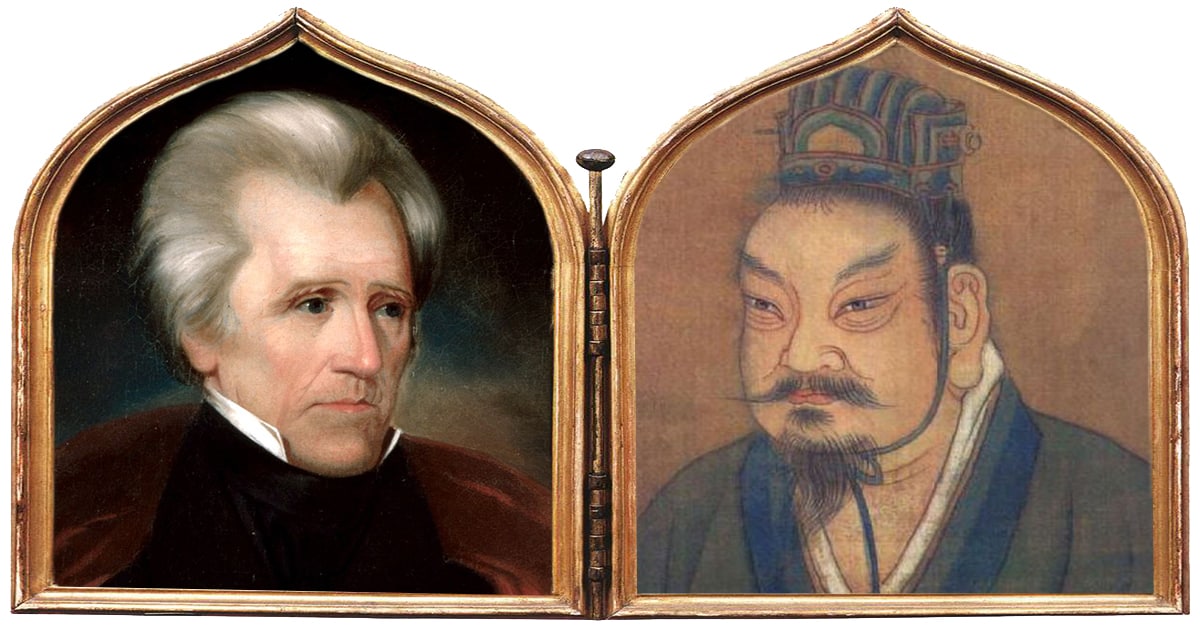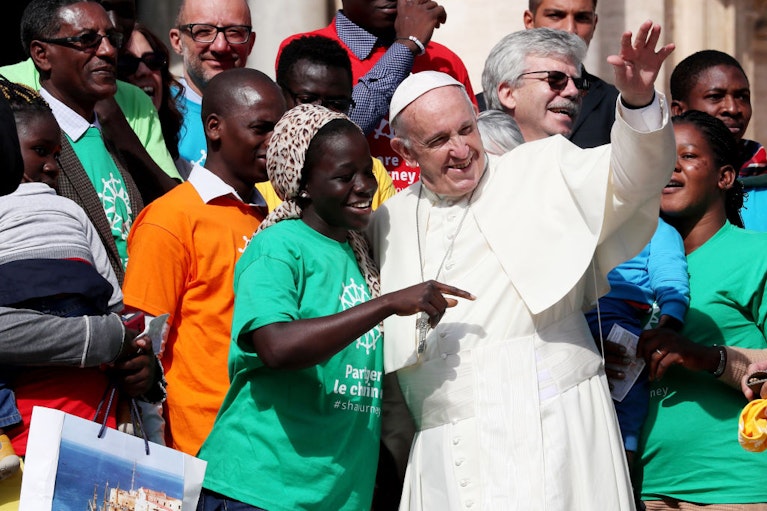Nathan Gardels is the editor-in-chief of Noema Magazine. He is also the co-founder of and a senior adviser to the Berggruen Institute.
Just as President Donald Trump has reached back into U.S. history to draw inspiration for his “America First” policy from President Andrew Jackson’s mid-19th century populism, so too is Chinese President Xi Jinping reaching back to the Zhou dynasty 3,000 years ago — which lasted longer than the entire existence of the U.S. — for inspiration. Xi’s idea of a “new era” of global relations based on a “community of common destiny” is drawn from the concept of tianxia — or “all under heaven,” living in harmonious coexistence — that reigned during that ancient era.
Jacksonian-style “America First” policies have never been attempted in our age of interdependence that was largely created by liberal internationalist policies of the U.S. during the 20th century. Nor has the Chinese concept of tianxia ever been tried on a world scale among highly distinct civilizations and political systems tightly tethered by globalization.
In The WorldPost this week, we examine the conjunction of these two opposite historical resonances coming together at the same time. And we check the claims of harmonious cooperation along China’s new Silk Road — spanning from Eurasia to Africa — to test how the aspiration of a common destiny is playing out in reality.
Prominent Chinese philosopher Zhao Tingyang outlines the history and logic of the tianxia system in ancient China. The Zhou dynasty “sought to bring the whole world together under one tent as a way to eliminate any negative external influence, and thereby conflict, within what was then considered the civilized world,” he writes from Beijing. Tianxia “defines the concept of ‘the political’ as the art of co-existing through transforming hostility into hospitality — a clear alternative to the more modern concepts of German legal theorist Carl Schmitt’s recognition of politics as ‘us vs. them,’ Hans Morgenthau’s ‘realist’ struggle for power and Samuel Huntington’s ‘clash of civilizations.’”
The philosophical basis of the tianxia concept, Zhao explains, is the Confucian notion of “live and let live” that seeks to minimize conflict instead of maximize self-interest. For Zhao, such a mode of coexistence is the most rational formula for peace and stability in today’s diverse world. “A ‘tianxia peace’ for our hyper-connected, interdependent world … would have to be built on the broader foundation of a compatible universalism that includes all civilizations — not an exclusive unilateral claim of one civilization to universality.”
In a more contemporary context, one of China’s leading strategists, Yan Xuetong, addresses anxiety that the U.S. and China are headed into a new Cold War. He believes that kind of frozen relationship can be avoided because, under Trump, the U.S. is stepping back from global leadership while China is not yet stepping up, and neither the U.S. nor China are engaging in ideological competition or waging proxy wars like those of the Soviet era.
“To be sure, China-U.S. competition will inevitably grow more severe in 2018,” Yan writes from Beijing. “At the moment, China appears to have more confidence than the U.S. in this competition because it believes the Trump administration suffers from a crippling lack of credibility both at home and abroad. The most crucial factor in international competition between superpowers is strategic credibility.”
He concludes that the Trump administration has “undermined its capacity to shape international opinions and regain strategic credibility. If that is the case, how can it initiate a new Cold War even if it wants to?”
The ability of the U.S. to shape the strategic landscape going forward is further impacted by the tightening, if unbalanced, links between Russia and China. Writing from Vladivostok, Artyom Lukin argues that the hostility Russia has generated in the U.S. has driven it closer to China politically, as the two powers face a common adversary — but this comes at the risk of economic domination as its giant neighbor builds up its new Silk Road routes across the Eurasian steppes. “Their [political] closeness,” Lukin says, “cannot conceal the reality that China’s economy is more than eight times bigger than Russia’s, and the gap continues to grow. It remains to be seen if, in the long run, this economic asymmetry will develop into political inequality, with Russia becoming a tributary state along China’s Silk Roads.”
Writing from the Sri Lankan port city of Hambantota, Jonathan Hillman warns of a similar risk already evident in South Asia. “In December, a Chinese state-owned enterprise took over a port here in this small fishing town on Sri Lanka’s southern coast,” he reports. “The port was never intended to be Chinese-owned and operated, but it was Chinese-financed and built, creating a debt that Sri Lanka could not repay. As Sri Lanka celebrates 70 years of independence from British imperial rule, some fear the nation now faces a new form of colonialism.”
For Hillman, “the episode has turned tiny Hambantota into something of a global lighthouse. Sitting in the Indian Ocean, it serves as a warning about the hazards of China’s global infrastructure push, which could make small economies dependent even while helping them develop.” Others have gone so far as to coin a new phrase for the potential consequence of China’s economic expansion: “creditor imperialism.”
If history is any guide, as Oxford scholar Peter Frankopan points out, China’s new Silk Road initiative in the 21st century will be replete with the same kind of benefits and drawbacks as the old Silk Road trading routes millennia ago.
As a concept of governance rooted in the wisdom of one of the longest surviving civilizations on the planet, tianxia is certainly a worthy ideal. Its viability in today’s interdependent world of plural identities will be determined by what actually transpires on the ground for all those under heaven.
Washington Post partners with Berggruen Institute to publish The WorldPost
Though we began our collaboration in October, The Washington Post and the Berggruen Institute formally announced this week our partnership to publish The WorldPost.
“As The Post’s Opinions section grows, one of our aims is to increase our offering of thoughtful commentary that brings our readers up close to the biggest international conversations today,” said Editorial Page Editor Fred Hiatt. “The WorldPost, with its strong global reputation and impressive network of writers around the world, is an ideal partner for achieving this.”
Nicolas Berggruen, chairman of the Berggruen Institute, agrees: “The Washington Post has become one of the strongest pillars of quality journalism in the age of peer-driven social media. I can think of no better partner for The WorldPost to help improve the integrity and trustworthiness of the democratic discourse.”





